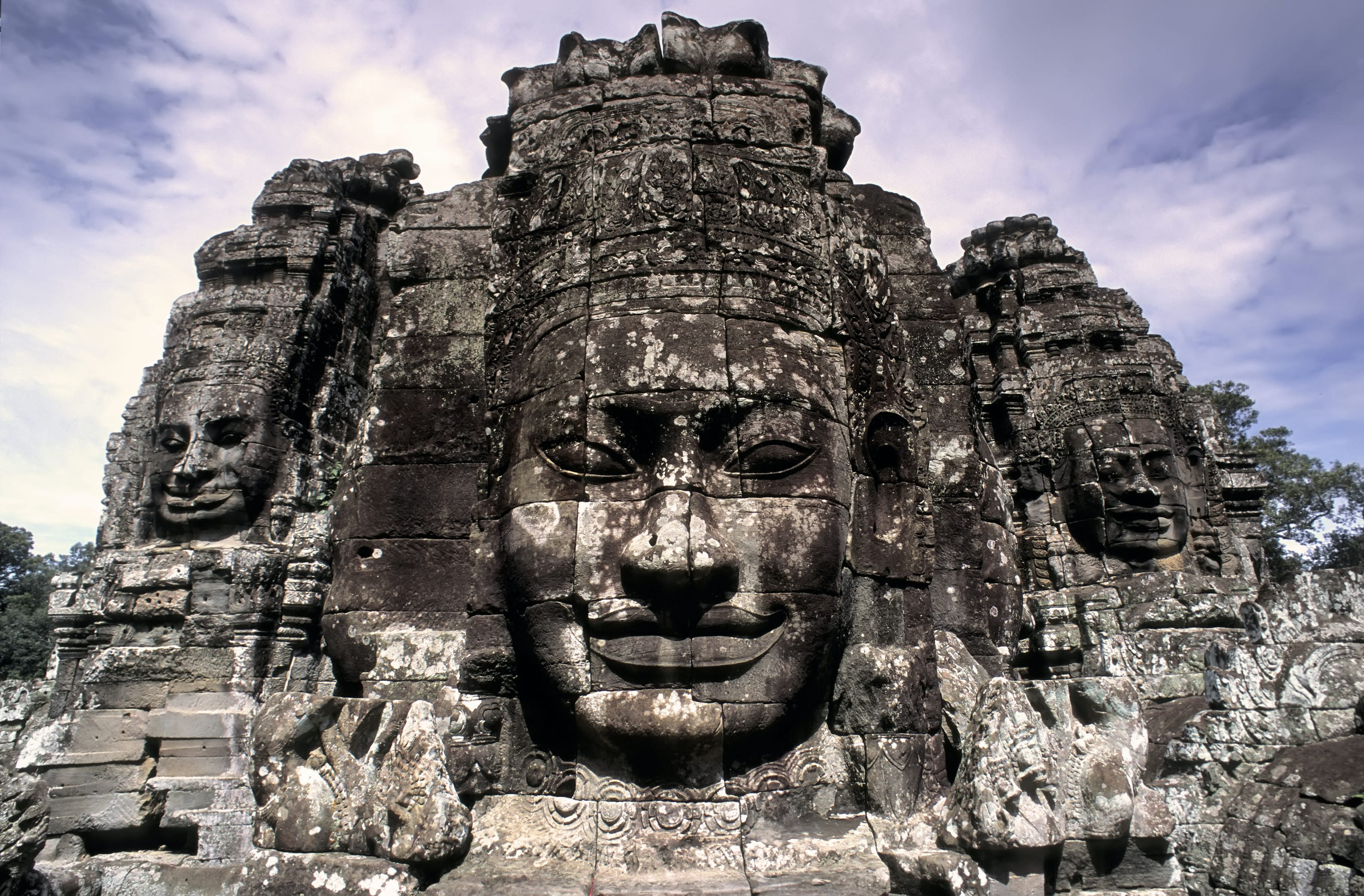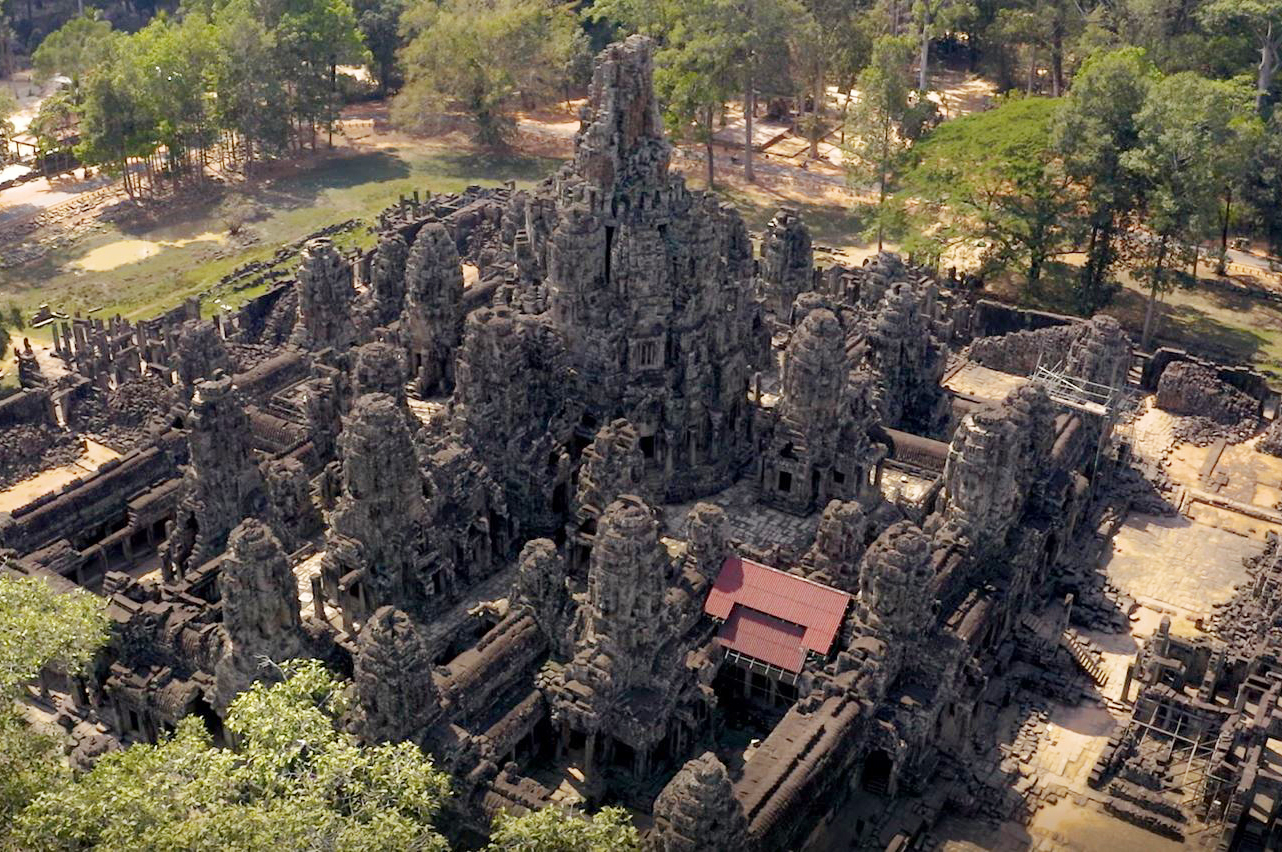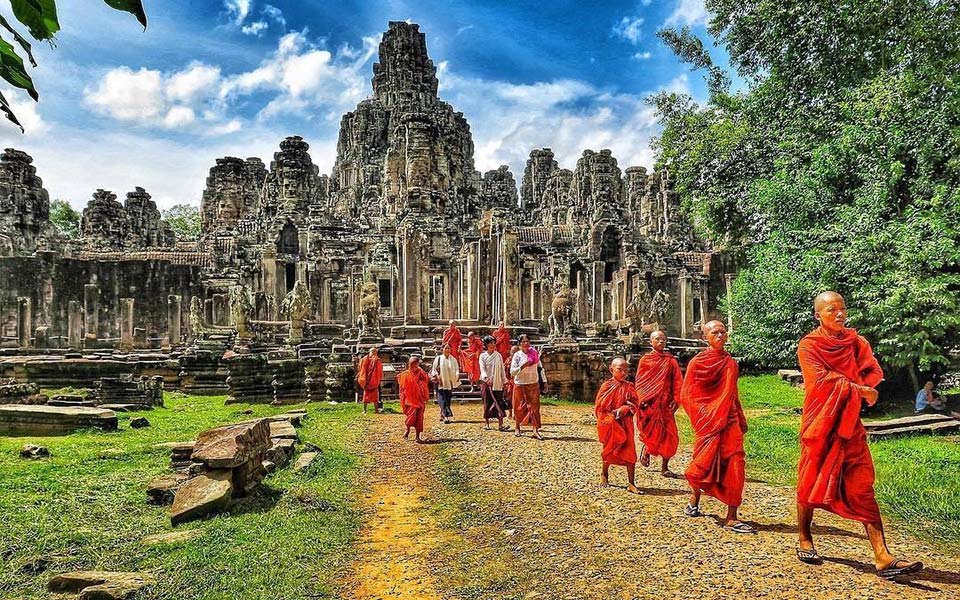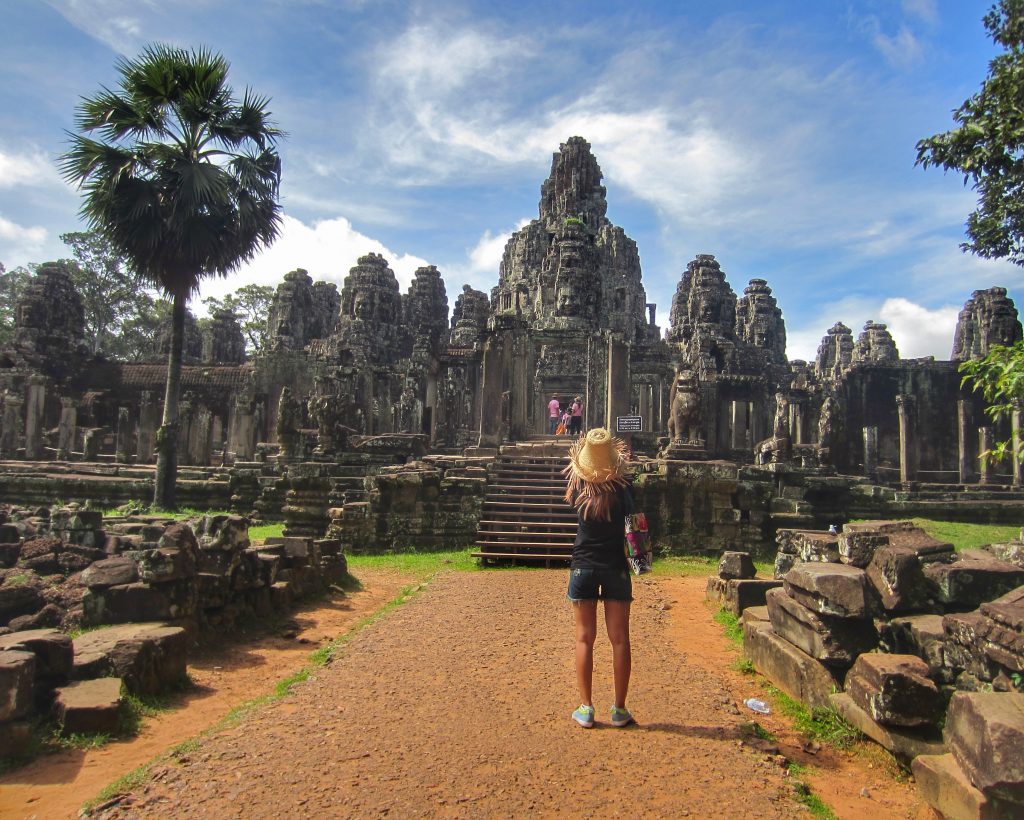Q: What is Bayon Temple, and why is it significant?
A: Bayon Temple is a magnificent temple located within the Angkor Thom complex in Siem Reap, Cambodia. It was built in the late 12th century by King Jayavarman VII and served as the state temple of the Khmer empire. Bayon Temple is renowned for its iconic stone faces and intricate bas-reliefs, which depict historical and mythological scenes. Its significance lies in its architectural grandeur, cultural importance, and as a symbol of the Khmer empire's devotion to Buddhism.
--------
Q: How long does it take to explore Bayon Temple?
A: The time required to explore Bayon Temple depends on your level of interest and exploration. On average, visitors spend about one to two hours exploring the temple. This allows time to admire the stone faces, wander through the corridors, and appreciate the intricate carvings. However, some travelers may choose to spend more time to delve deeper into the details and immerse themselves in the temple's ambiance.
--------
Q: Are there any specific guidelines or rules for visiting Bayon Temple?
A: When visiting Bayon Temple, it is important to follow certain guidelines to ensure respect for the site and its cultural significance include: dress appropriately, stay on designated paths, respect the stone faces, follow instructions from guides or staff
--------
Q: Can I hire a guide to learn more about Bayon Temple's history and significance?
A: Yes, hiring a guide is a great way to enhance your visit to Bayon Temple. Local guides are knowledgeable about the temple's history, symbolism, and the Khmer empire. They can provide insightful information, point out hidden details, and bring the temple to life through storytelling. Guides can be arranged at the entrance of the temple or through tour agencies in Siem Reap.
--------
Q: Are there any other attractions near Bayon Temple worth exploring?
A: Absolutely! Bayon Temple is located within the Angkor Thom complex, which houses several other remarkable attractions. Some nearby attractions worth exploring include the Terrace of the Elephants, the Terrace of the Leper King, and the Baphuon Temple. Additionally, the sprawling Angkor Archaeological Park is home to numerous temples, such as Angkor Wat and Ta Prohm, which are easily accessible from Bayon Temple.
--------
Q: Are there any nearby dining options or facilities at Bayon Temple?
A: While there are no dining options or facilities directly at Bayon Temple, there are nearby options to consider. Outside the temple complex, you'll find small restaurants, cafes, and street food stalls where you can enjoy local Khmer cuisine. These eateries offer a variety of dishes, ranging from traditional Cambodian dishes to international cuisine. It's advisable to bring some snacks and water with you to keep yourself hydrated and energized during your temple visit.
--------
Q: Can I take photographs at Bayon Temple?
A: Photography is allowed at Bayon Temple. Feel free to capture the mesmerizing stone faces, intricate carvings, and unique architectural features. However, it's important to be considerate of other visitors and respect the sacredness of the site. Avoid using flash photography, as it can potentially damage the delicate artwork. Also, be mindful of your surroundings and follow any specific guidelines or restrictions provided by guides or staff members.




